Why is Multilingual Website Design a Necessity Today?
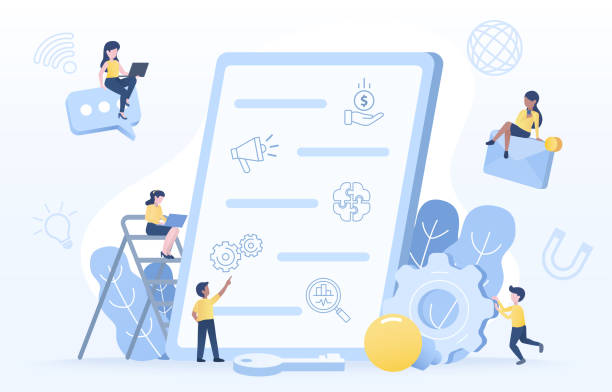
In today’s interconnected world, #expanding_business_to_global_markets has become more important than ever.
One of the most powerful tools to achieve this goal is multilingual website design.
It is no longer possible to reach all potential audiences worldwide with just one language.
Imagine your website is only available in Persian; in this case, all English-speaking, Arabic-speaking, Chinese-speaking, and other users who might need your products or services would be easily lost.
This is a huge lost opportunity.
Multilingual website design not only allows you to connect with more audiences but also enhances your business’s credibility and professionalism on an international scale.
A website with multi-language capability demonstrates your respect for cultural diversity and the needs of customers from all over the world.
This approach is, in fact, a strategic investment for the future of your business.
Research shows that over 70% of users prefer to shop from websites where content is provided in their native language. This statistic clearly highlights the importance of a multilingual site.
In addition to increasing sales and converting visitors into customers, multilingual website design significantly contributes to improving international SEO.
Search engines like Google prefer websites that offer content in various languages, and this can improve your site’s ranking in search results for different keywords in different languages.
By providing this capability, you literally break down geographical barriers and make your business accessible to a global market, which is a significant competitive advantage.
Did you know that a poor corporate website loses you many opportunities daily? Solve this problem forever with professional corporate website design by Rasawp!
✅ Create a powerful and reliable image for your brand
✅ Targeted attraction of new customers and increased sales
⚡ [Receive free website design consultation]
Key Foundations and Principles in Multilingual Website Design
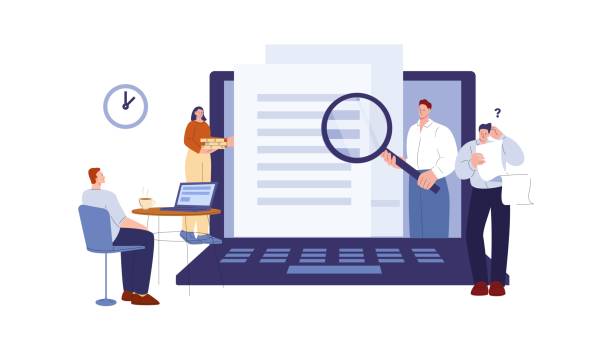
For a successful #multilingual_website_design, specific key foundations and principles must be considered.
The first step in this path is choosing a suitable technical structure that can effectively support multiple languages.
This includes selecting a Content Management System (CMS) with strong multilingual capabilities, as well as the correct URL architecture.
There are three main approaches for URL structure: using subdomains (e.g., en.yoursite.com), subdirectories (e.g., yoursite.com/en/), or country code Top-Level Domains (ccTLDs) (e.g., yoursite.co.uk).
Each of these methods has its advantages and disadvantages, and the appropriate choice depends on your business goals and target audience.
In addition to URL structure, hreflang tags play a vital role in multilingual SEO.
These tags inform search engines which version of a page is intended for which language and geographical region.
Incorrect use of these tags can lead to duplicate content issues and a decrease in SEO ranking.
Another important principle is localization.
Localization goes beyond mere translation; this process involves adapting content to the culture, currency, dates, and even colors appropriate for the target region.
For example, colors may have different meanings in various cultures, and ignoring these points can severely impact user experience.
Also, the importance of easy and clear language switching capability for users should not be underestimated; a dropdown menu or small language flags in the site header are common solutions that allow users to easily select their desired language.
These fundamental points form the basis of a successful international portal.
Choosing the Best CMS and Multilingual Support Tools

Choosing the right #Content_Management_System (CMS) is one of the key decisions in the multilingual website design process.
A powerful CMS should have native capabilities for managing multilingual content or support efficient plugins and modules for this purpose.
WordPress, as the most popular CMS in the world, with plugins like WPML (WordPress Multilingual Plugin) or Polylang, provides the possibility of implementing a multilingual site.
These plugins allow for the translation of posts, pages, categories, tags, and even theme strings.
Alongside WordPress, platforms like Joomla and Drupal also benefit from built-in multilingual capabilities or strong modules for managing multiple languages.
To choose a CMS, factors such as ease of use, scalability, community support, and cost should be considered.
Some proprietary CMSs or SaaS (Software as a Service) solutions also exist that are specifically designed for large multilingual projects but may have higher costs.
In addition to the CMS, other tools are essential for multilingual support.
These tools include CAT software (Computer-Assisted Translation) for translators, Translation Management Systems (TMS) for coordinating large translation projects, and translation quality control tools.
The correct selection of these tools will optimize the translation process, reduce errors, and ensure content consistency across all languages.
Table 1: Comparison of Popular CMSs for Multilingual Website Design
| CMS | Multilingual Features | Ease of Use | Scalability |
|---|---|---|---|
| WordPress | Powerful plugins (WPML, Polylang) | Very High | Medium to High (with optimization) |
| Joomla | Good built-in capabilities | Medium | High |
| Drupal | Powerful built-in capabilities and modules | Medium to Low | Very High |
| Magento | Multilingual support for stores | Medium to Low | Very High (for e-commerce) |
The Importance of Content Translation and Cultural Localization in Multilingual Website Design
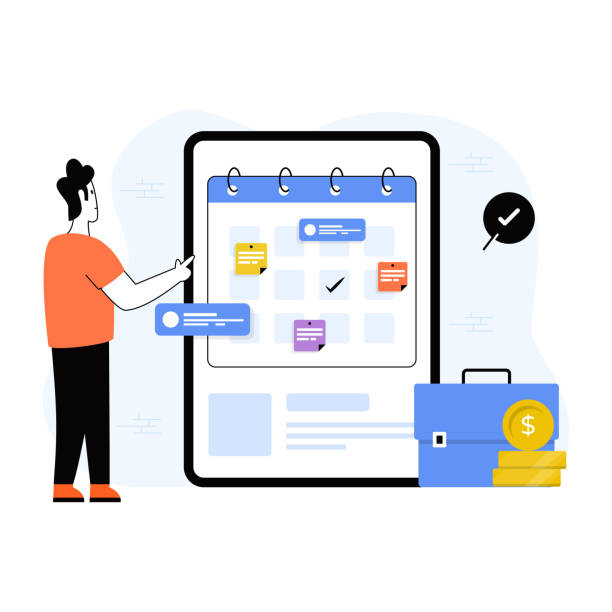
#Content_translation in multilingual website design is not merely about converting words from one language to another; it goes far beyond that.
This process involves cultural localization, which ensures that the content is not only linguistically correct but also culturally understandable and appealing to the target audience.
A dry, machine translation might be faithful to the original text but unable to convey emotions, jokes, or specific cultural references.
For instance, colloquialisms, local idioms, and even forms of address can vary greatly across different cultures.
Ignoring these differences can lead to misunderstandings or even offense to the audience, ultimately damaging your brand’s reputation.
Localization includes numerous aspects, such as adapting currency, date and time formats, measurement systems (like metric and imperial), and even the images used on the website.
For example, an image that is perfectly normal and accepted in one culture might be considered offensive or inappropriate in another.
Therefore, the translation team must not only be fluent in the target language but also have a complete understanding of the culture and customs of that region.
#Investing in high-quality translation and localization is crucial for a multilingual website, as it directly impacts user experience (UX) and consequently conversion rates.
Using native speakers who also have knowledge in your content’s specialized field is the best approach to ensure the accuracy and effectiveness of translations.
This not only helps prevent major errors but also fosters a sense of trust and deeper connection with your global audience.
A website with professionally localized content demonstrates your respect for the audience and your commitment to providing the best possible experience.
Did you know that poor online store design can drive away up to 70% of your potential customers? Rasawp transforms your sales with professional and user-friendly e-commerce website design.
✅ Significant increase in sales and revenue
✅ Full optimization for search engines and mobile
⚡ [Receive free consultation from Rasawp]
SEO Optimization for Multilingual Sites: Vital Tips
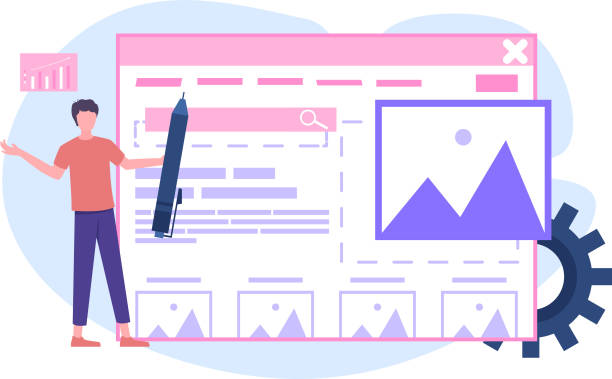
#SEO_optimization for a #multilingual_site has its own complexities that go beyond single-language site SEO.
The goal is to ensure that search engines can correctly discover, index, and rank different language versions of your website.
As mentioned earlier, the correct use of hreflang tags is the most vital aspect of multilingual SEO.
These tags are placed in the <head> section of each HTML page and tell search engines that alternative versions of a page exist for different languages or geographical regions.
Incorrect use of these tags can lead to duplicate content issues, which harms the site’s ranking.
Another important point is keyword research for each language.
Keywords that are popular in one language may not have the exact equivalent or same popularity in another language.
The culture and search behavior of people in each region differ, so it is essential to conduct separate keyword research for each target language.
Also, translated content must be high quality and optimized for local keywords.
International SEO also includes using SEO-friendly URLs for each language (such as using subdirectories or ccTLDs) and creating separate XML sitemaps for each language.
These sitemaps help search engines discover all your linguistic pages.
Page Speed and User Experience (UX) are also important SEO factors that should be optimized for each language version.
Website hosting near target audiences can help improve loading speed.
Finally, local link building is also important for increasing website authority and ranking in each language.
Acquiring backlinks from reputable and relevant sites in each country or language region can significantly help improve local and international SEO and turn your multilingual website design process into a real success.
Technical Challenges and Common Solutions in Multilingual Website Design Implementation

#Technical_implementation of a #multilingual_website can come with numerous challenges that require careful planning and technical knowledge.
One of the primary challenges is content and database management.
A system must be designed to effectively store, retrieve, and display different versions of content for each language, without causing interference or data loss.
This typically involves creating dedicated fields for each language in the database or using related tables to store translations.
The solution to this challenge is to use powerful CMSs with built-in multilingual capabilities or specialized plugins that automate this management.
Another challenge is managing translation strings found in themes and plugins.
Many themes and plugins contain texts that need to be translated (such as buttons, error messages, or default titles).
For this purpose, specific tools like POEditor software or translation string management plugins in CMSs are used.
These tools allow developers and translators to easily identify and translate all text strings on the site.
Issues related to fonts and character sets can also be problematic.
Different languages use different character sets (such as Latin, Cyrillic, Arabic, or Chinese alphabets).
Ensuring that your website correctly displays all these characters and supports appropriate fonts for each language is crucial.
Using UTF-8 as the default character encoding is a global standard that covers most languages.
Also, #thorough_testing of all language versions across different browsers and devices is essential for identifying and resolving technical issues before launch.
These steps are vital for a stable and flawless multilingual website design.
Multilingual Content Management: Solutions and Best Approaches

#Multilingual_Content_Management is one of the most complex yet vital aspects of multilingual website design.
After the initial launch, how to update, add, and maintain content across all languages without creating chaos becomes important.
The best approach here is to use a Translation Management System (TMS).
A TMS is a centralized platform that allows you to manage the translation process from start to finish, from submitting content for translation to receiving final translations and uploading them to the website.
These systems often integrate with your CMS to streamline the workflow.
The use of Translation Memory (TM) and Terminology Database (TermBase) are also key solutions.
TM stores previously translated segments and automatically suggests them if the same sentences or phrases recur, leading to time and cost savings in translation and ensuring consistency in translations.
TermBase is also crucial for maintaining consistency in technical terminology and branding across all languages.
Establishing an #organizational_culture for multilingual content management, including defining roles and responsibilities for translators, editors, and content managers, is also essential.
Setting clear processes for content updates and ensuring that all language versions are updated simultaneously prevents inconsistencies.
Your international website should have a primary version from which all translations originate, and a continuous quality control process should be implemented to ensure the accuracy and quality of translations.
These solutions help you manage your multilingual content efficiently, sustainably, and with high quality.
Table 2: Key Tools in Multilingual Content Management
| Tool/Concept | Description | Advantage for Multilingual Site |
|---|---|---|
| Translation Management System (TMS) | Software platform for managing and automating the translation process | Increased efficiency, reduced translation time and cost, project tracking |
| Translation Memory (TM) | A database of previously translated segments | Reduced repetitive work, maintaining vocabulary consistency, cost savings |
| Terminology Database (TermBase) | Dedicated glossary for key terms and vocabulary | Consistency and uniformity in the use of specialized and branding terms |
| Quality Control (QA) | Reviewing the accuracy and quality of translations | Ensuring linguistic and cultural accuracy, preventing errors |
User Experience (UX) in Multilingual Website Design: How to Improve It?

#User_Experience (UX) plays a pivotal role in the success of #multilingual_website_design.
A multilingual site should be designed so that users from any language and culture can easily find and interact with the content they need.
The first and most important point is easy access to the language selector.
This selector should be placed in a clear and visible location, usually in the website’s header or footer.
Using the full language name (e.g., “English” instead of “EN”) or country flags (with caution, as one language may be spoken in multiple countries) can help users quickly identify their language.
Furthermore, Responsive Design is essential for all language versions.
Ensure that the layout and design elements are displayed correctly in different languages, especially in Right-to-Left (RTL) languages (such as Persian or Arabic).
For RTL languages, the entire site layout must be adjusted from right to left, including text alignment, menu direction, and even image placement.
Overlooking these details can lead to a very poor user experience.
Page loading speed is also important for each language version.
Users are unwilling to wait for pages to load, and this becomes even more critical for international users who may have weaker internet connections.
Optimizing images, compressing code, and using a CDN (Content Delivery Network) can help improve loading speed.
Finally, User Testing with real users from different linguistic regions is the best way to identify weaknesses in the user experience.
By gathering feedback and making necessary changes, you can ensure that your multilingual website design provides an excellent user experience for everyone.
Did you know that 94% of users’ first impressions of a business are related to its website design? Transform this first impression into an opportunity for growth with professional corporate website design by **Rasawp**.
✅ Attract more customers and increase sales
✅ Build credibility and trust in the audience’s eyes⚡ Get free website design consultation!
Review of Successful Multilingual Website Design Examples and Lessons Learned
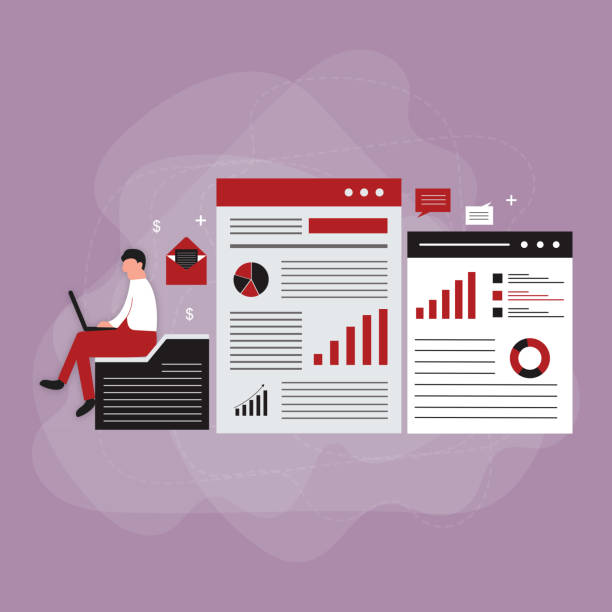
#Reviewing_successful #multilingual_website_examples can be inspiring and offer valuable lessons for your multilingual website design.
Many large international companies, including Google, Apple, and Airbnb, are prime examples of successful multilingual site implementation.
These companies clearly demonstrate how to reach global audiences by combining high-quality translation, cultural localization, and excellent UX.
For example, Airbnb’s website not only translates its content into multiple languages but also utilizes localized images and content for each region to create a deeper sense of connection with users.
Google, by offering its services in countless languages and providing the ability to search and interact in users’ native languages, has set a standard in this field.
Lessons learned from these examples include:
- Focus on complete localization: Simply translating words is not enough.
All cultural aspects, including images, formats, and even tone of writing, must be localized. - Visual and user-friendly UX design: The language switching process should be very simple and intuitive.
A global icon or the full language name is the best option. - Accurate international SEO: Correct use of hreflang tags and appropriate URL structure for each language is crucial.
- Continuous and coordinated updates: Content of all language versions should be updated simultaneously and regularly to prevent inconsistencies.
- Choosing a scalable platform: The CMS and tools used must have the capability to grow and add new languages in the future.
These successful examples show that multilingual website design is a long-term investment that requires attention to detail and a commitment to quality at all stages.
By modeling the best practices and adapting their strategies to your specific business needs, you can create a powerful and impactful multilingual site.
The Future of Multilingual Website Design: Trends and Opportunities Ahead

#The_future_of_multilingual_website_design promises exciting advancements and opportunities that will further connect businesses to global markets.
One of the main trends is the #increasing_role_of_artificial_intelligence and machine learning in translation and localization.
While machine translation still cannot fully replace human translators, more advanced AI tools are capable of providing higher-quality and faster translations that can serve as a starting point for human translation (Post-Editing).
This will make the multilingual website design process more efficient and cost-effective.
Another trend is content personalization based on user language and geographical location.
With technological advancements, websites can automatically detect and display the user’s language and even content relevant to their geographical location, significantly improving the user experience.
This goes beyond merely changing the language and includes displaying specific products, services, or offers tailored to the local market.
Deep localization will play a more prominent role in the future.
Additionally, the importance of multilingual video and audio content is increasing.
With the expansion of video platforms and podcasts, companies must consider dubbing or subtitling their audio and video content into various languages to reach global audiences.
This is a new opportunity to connect with audiences who prefer to hear or watch content rather than read it.
Finally, better integration with digital marketing tools (such as email marketing, Google ads, and social media) in the future will help businesses manage their multilingual marketing campaigns more cohesively and effectively.
These trends indicate that multilingual website design is not just a current need but a long-term strategy for global success.
Frequently Asked Questions
| Question | Answer |
|---|---|
| What is a multilingual site? | It is a website whose content is available to users in several different languages. |
| Why should we design a multilingual site? | To expand access to international audiences, increase site traffic, improve SEO in target markets, and provide a better user experience for non-Persian speaking users. |
| What are the main methods for implementing a multilingual site? | Using subdomains (e.g., en.mysite.com), using subdirectories (e.g., mysite.com/en/), and using separate domains for each language (e.g., mysite.com and mysite.de). |
| Which implementation method is better for SEO? | Generally, using subdirectories (language folders) is often recommended due to the transfer of main domain authority to other languages. |
| What is the Hreflang tag and what is its use? | It is an HTML tag or HTTP Header that tells search engines which version of a page is suitable for which language or geographical region. This tag prevents Duplicate Content and improves SEO. |
| How is the Language Switcher designed? | Usually by using a dropdown menu, button, or flag in the site’s header or footer, which allows the user to select their desired language. |
| Is automatic (machine) translation suitable for a multilingual site? | No, machine translation usually has low quality and many errors that can harm the site’s credibility. Human translation or a combination of human translation and machine post-editing is recommended. |
| What are the most important SEO tips in multilingual site design? | Correct use of the Hreflang tag, having an appropriate URL structure for each language, translating meta titles and descriptions, translating core content, internal linking between related language versions. |
| Should all website content be translated? | It depends on the strategy. Usually, the main and important content of the site should be translated. Less important sections or blogs may not require full translation. |
| What are the main challenges in multilingual site design? | Managing content in different languages, translation costs, technical issues related to URLs and language tags, theme compatibility with right-to-left (RTL) languages like Persian and Arabic, and managing multilingual SEO. |
And other services of Rasa Web Advertising Agency in the field of advertising
Smart SEO: An effective tool for campaign management with the help of Google Ads management.
Smart Customer Journey Map: Transform sales by accurately targeting the audience.
Smart Customer Journey Map: An effective tool for improving SEO ranking with the help of SEO-focused content strategy.
Smart SEO: A novel service for increasing digital branding through user experience customization.
Smart Advertising Campaign: An effective tool for campaign management with the help of user experience customization.
And over hundreds of other services in the field of internet advertising, advertising consultation, and organizational solutions
Internet Advertising | Advertising Strategy | Advertorial
Resources
- Article on Virgool: Comprehensive Guide to Multilingual Website Design
- Video on Aparat: Multilingual Website Design Tutorial
- Rayana Blog: Key Tips for International Website Design
- Hamyar WordPress: Tutorial on Creating a Multilingual Site with WordPress
? For your business to be seen and grow in the digital world, Rasawp Afarin is your best companion. From professional WordPress website design to search engine optimization (SEO) and smart social media management, we provide everything you need for your online brilliance with high expertise and experience. Let your business shine powerfully on the web and achieve its noble goals.
📍 Tehran, Mirdamad Street, next to Bank Markazi, Kazeroun Jonoubi Alley, Ramin Alley, No. 6

